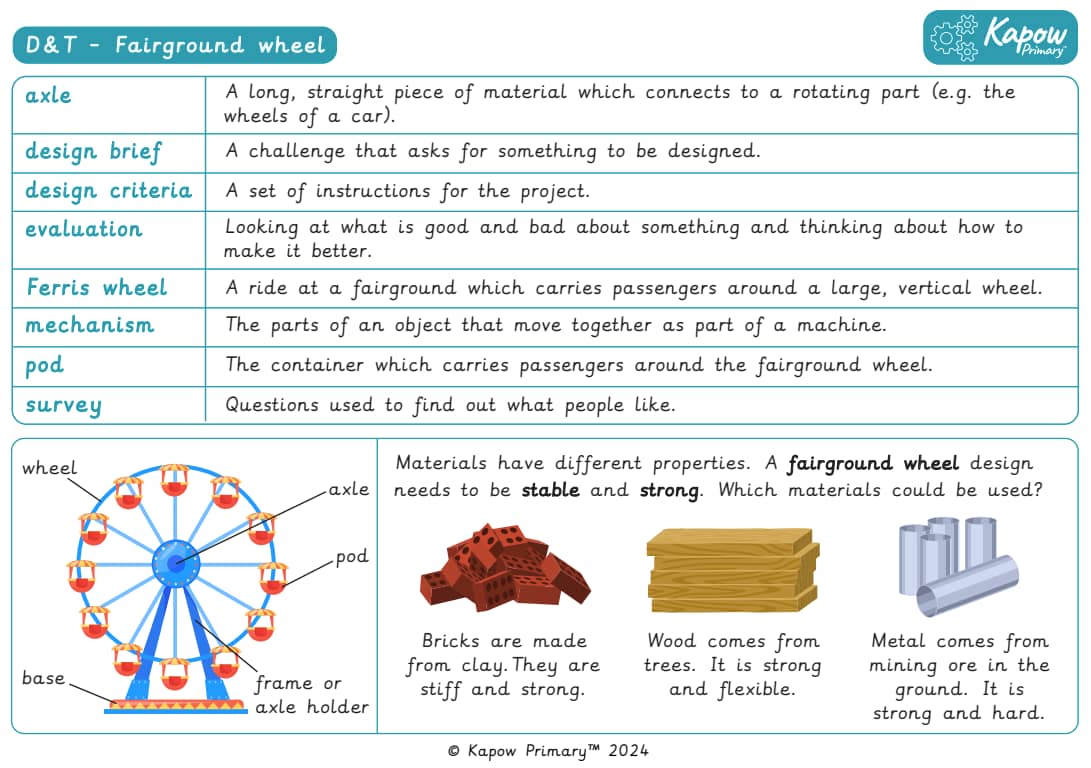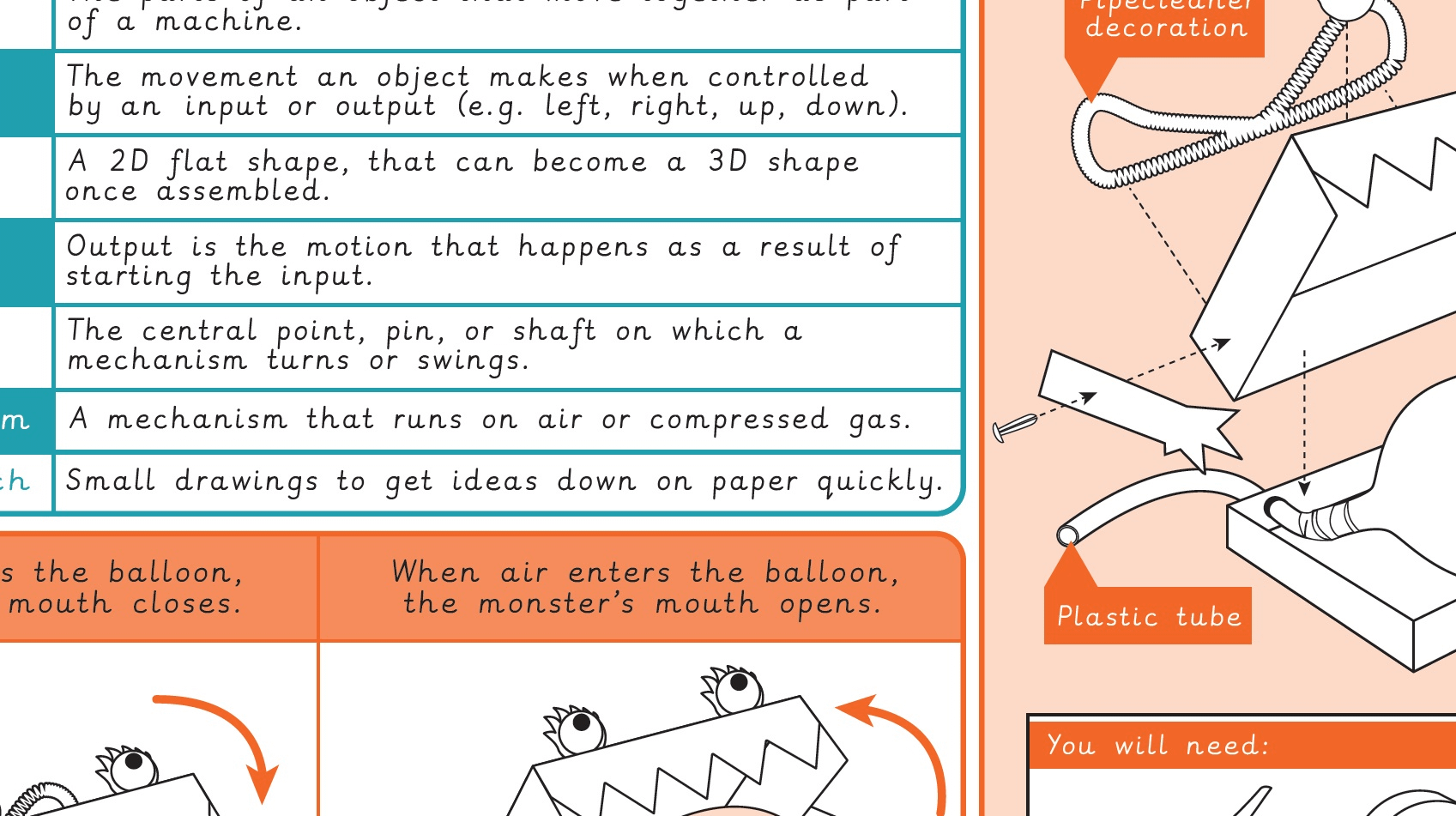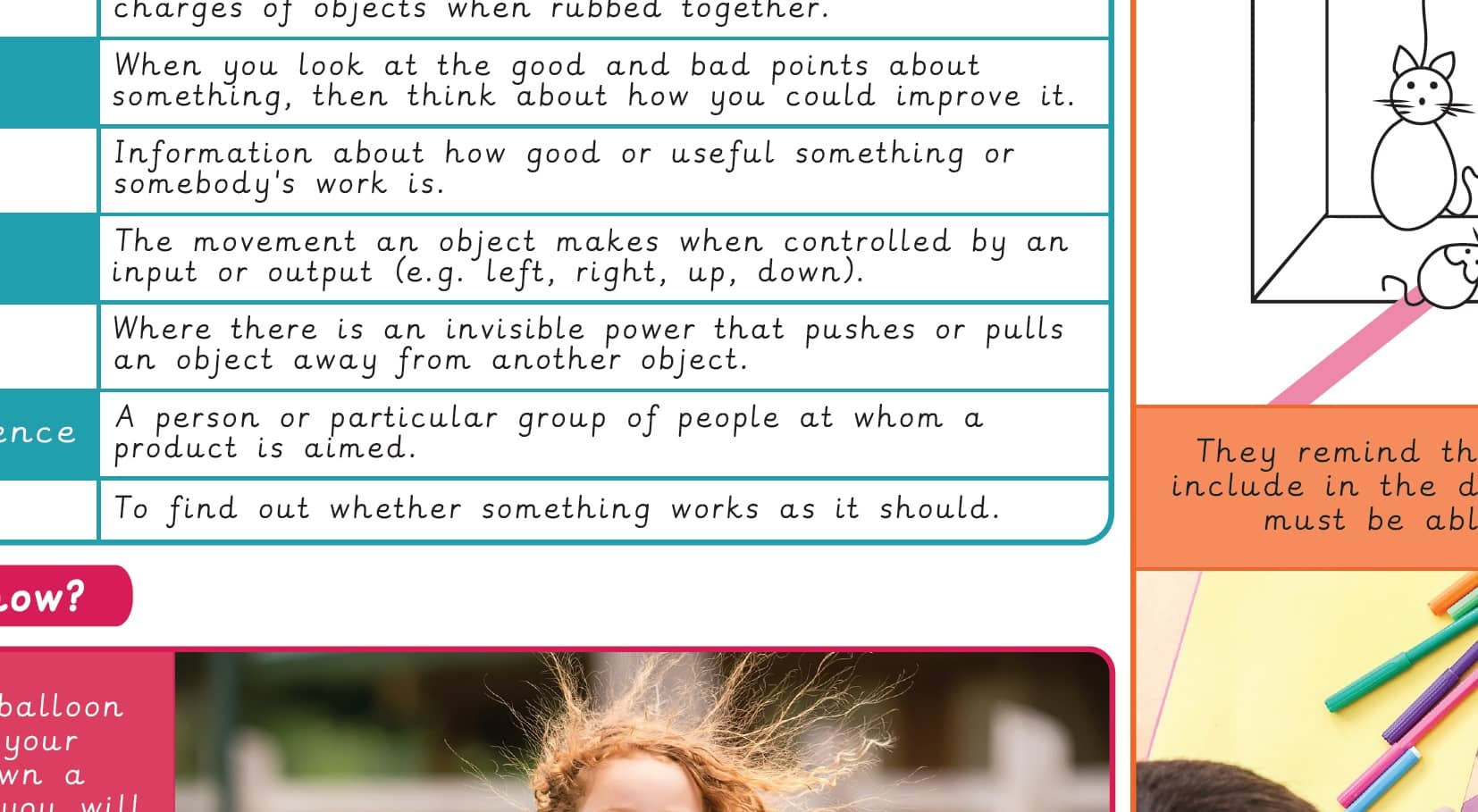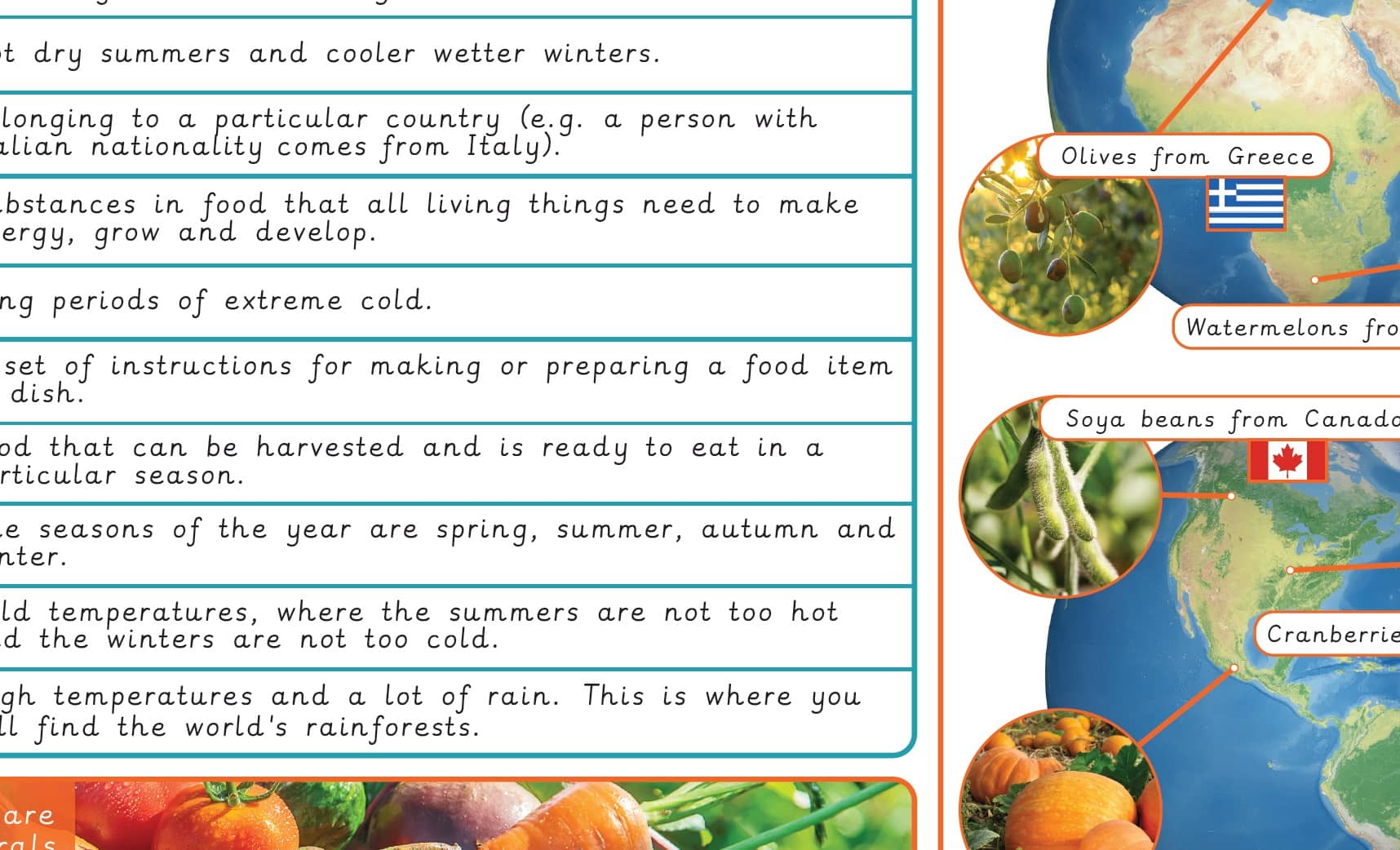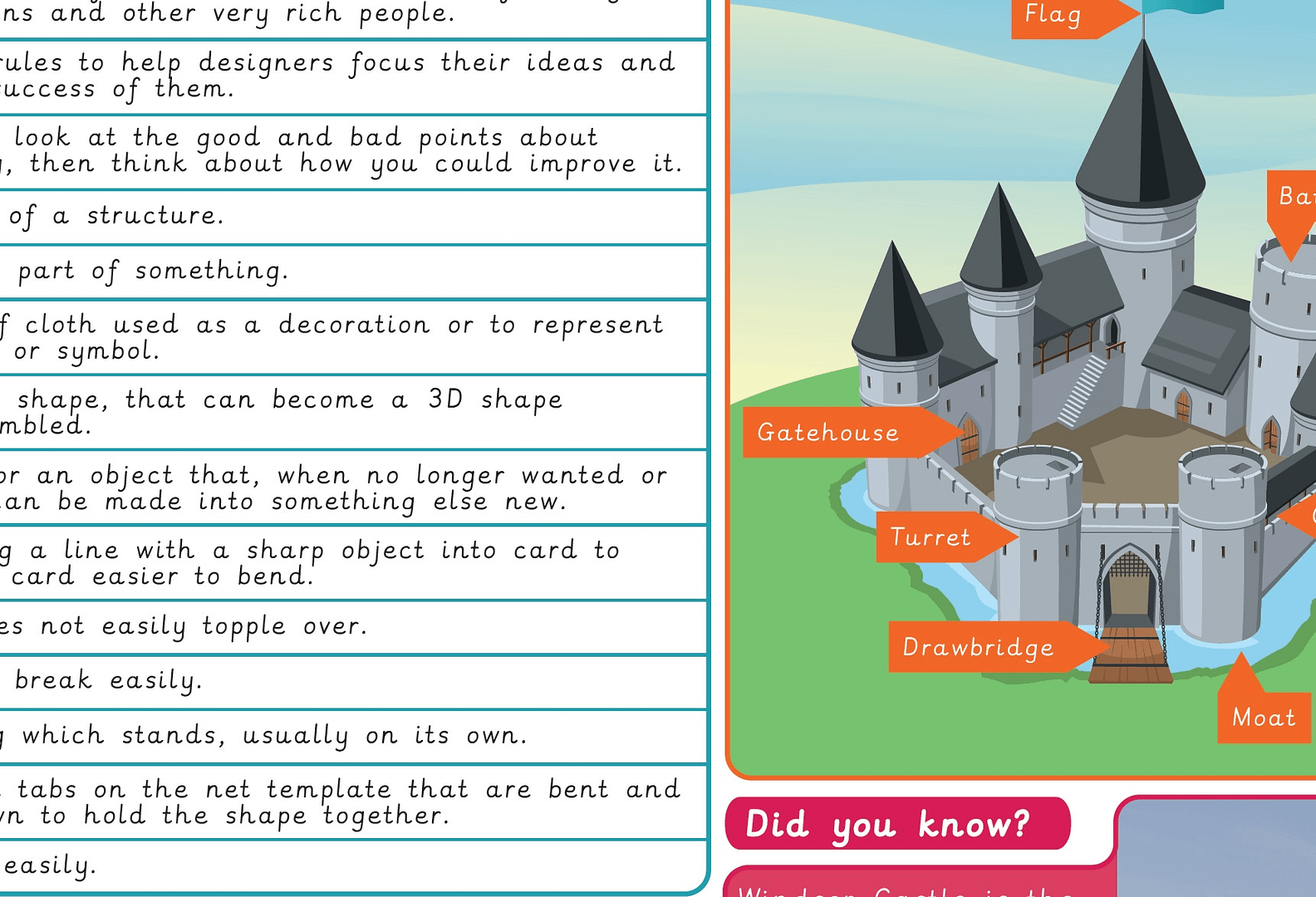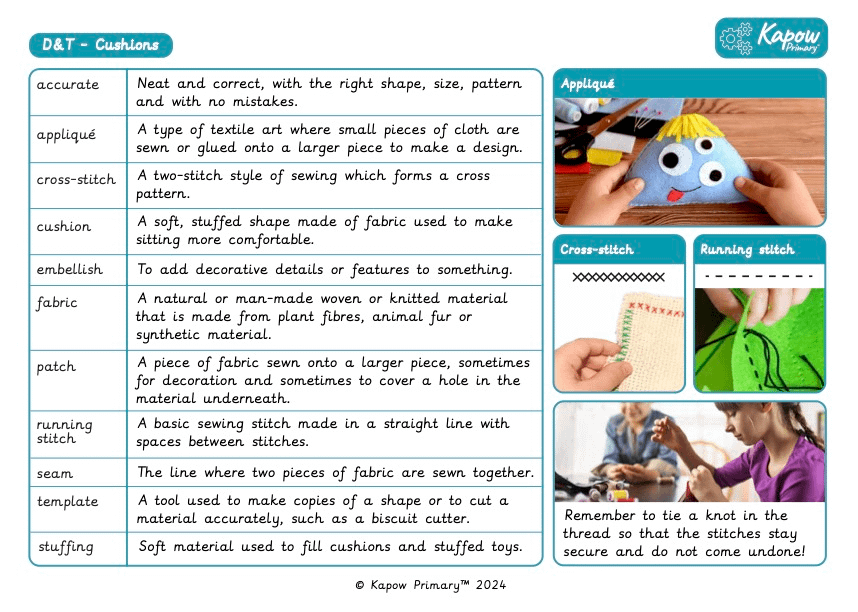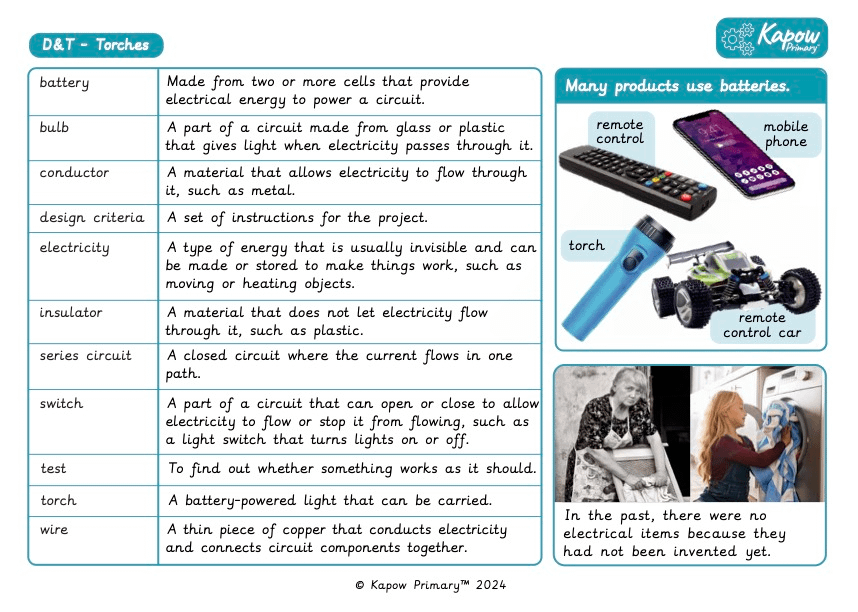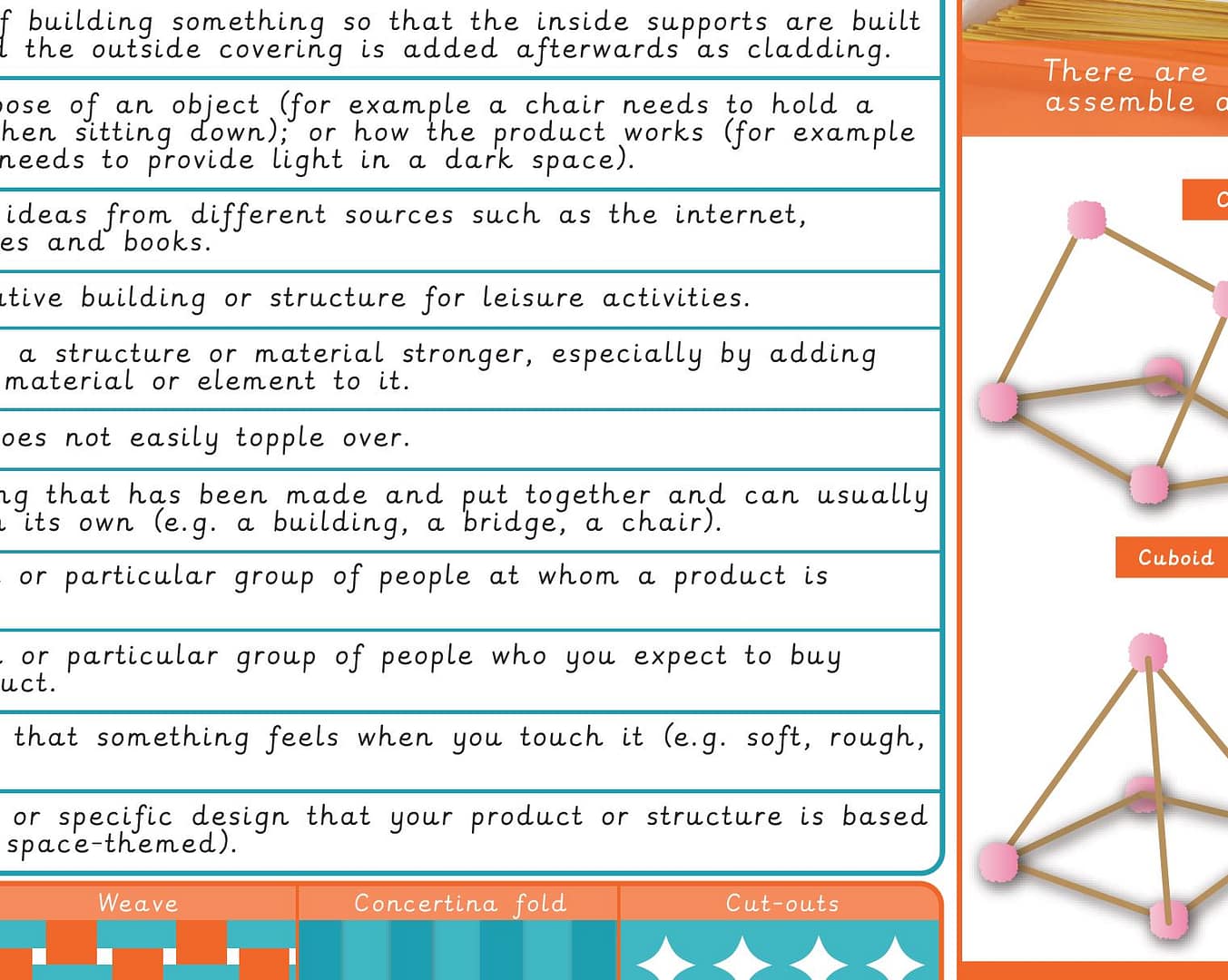Featured Document Type: Knowledge organiser
Knowledge organiser: DT – Y2 Structures Baby bear’s chair
This KS1 Y2 knowledge organiser provides a child-friendly summary of the key facts and knowledge for the Structures unit in the Kapow Primary Design and technology Key Stage 1 scheme of work. Suitable for printing on A4 and handing out to the children, it can also be printed in larger sizes for a classroom display. We provide this knowledge organiser free of charge as a sample of our other knowledge organisers for our Design and technology subject. Download by clicking on the big orange download button. You are likely to find the resource in your downloads folder.
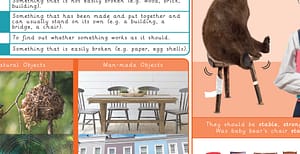
Knowledge organiser – D&T Y3: Pneumatic toys
Archived – Knowledge organiser – D&T Y3: Static electricity
A Knowledge organiser that captures the essential knowledge and skills learnt throughout the now unit Archived – Design and Technology, Year 3, Electrical Systems – Static Electricity.
This resource is designed to support the pupils as they explore the principles of static electricity and its applications in design and technology. It introduces key vocabulary such as electrostatic, attract, repel, motion, and component, helping the pupils understand how static charges are created and how they influence movement. The pupils will also learn about design criteria, evaluation, and constructive criticism to assess and refine their projects. It is perfect for consolidating essential knowledge and fostering curiosity about electrical forces by allowing the pupils to experiment with electrostatic energy.
Knowledge organiser – D&T Y3: Eating seasonally
Knowledge organiser – D&T Y3: Constructing a castle
Knowledge organiser: DT – Y3 Cushions
A Knowledge Organiser that captures the essential knowledge and skills learnt throughout the unit Design and Technology, Year 3, Textiles: Cushions.
This resource is designed to support children as they learn key sewing and textile skills by designing and making a cushion. It introduces essential vocabulary and techniques such as running stitch, cross-stitch, appliqué and embellishment, while developing children’s understanding of fabric, templates and stuffing. Learners are encouraged to work accurately and creatively, applying practical skills with care and attention to detail. It is perfect for consolidating essential knowledge and building confidence in working with textiles.
Knowledge organiser: DT – Y4 Torches
A Knowledge Organiser that captures the essential knowledge and skills learnt throughout the unit Design and technology, Year 4, Electrical systems – Torches.
This resource supports pupils in exploring how electrical circuits are used in everyday products, with a focus on designing and testing a battery-powered torch. Key vocabulary is clearly defined, including terms like battery, bulb, conductor, insulator, series circuit, and switch. It highlights the practical application of these components and introduces pupils to testing and evaluating their designs. Visual aids reinforce understanding by linking components to familiar products such as remote controls and mobile phones. The organiser provides an accessible foundation for understanding electrical systems in a real-world context.

